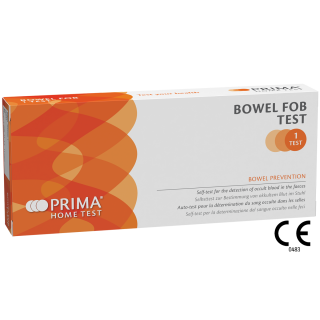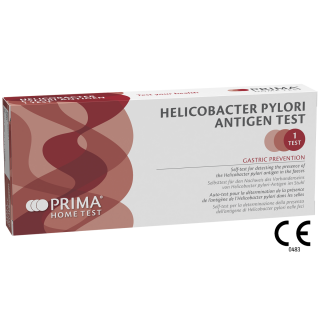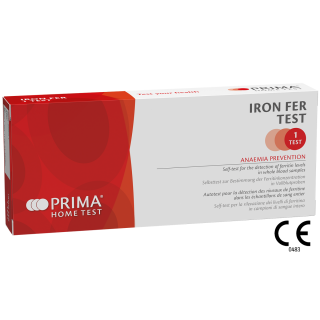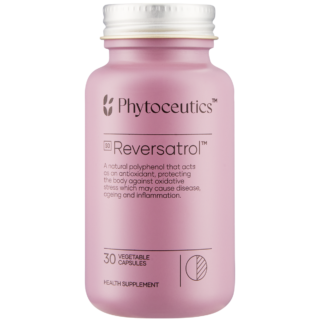Tag: Test
Test
Showing all 14 results
-
Read more
Prima – Bowel FOB Test
Faecal Occult Blood (FOB) is the presence in the faeces of blood that is not clearly visible to the naked eye. Occult blood may be the consequence of gastro-intestinal disorders such as ulcers, polyps, colitis, diverticulitis, rhagades, haemorrhoids or cancer. The signs of these lesions are often silent in the first phases, so searching for occult blood in the stool is an important screening test, which allows to identify the presence of pathologies in the gastro-intestinal system at an early stage.
-
Read more
Prima – C-Reactive Protein Test (1 Test)
Rapid self-test for the semi-quantitative detection of C-Reactive Protein (CRP) in whole blood samplesC-REACTIVE PROTEIN
C-Reactive Protein (CRP) is a non-specific marker mainly produced by the liver and used to diagnose bacterial diseases and inflammatory disorders. CRP is a very sensitive and fast appearing indicator which could therefore be helpful for deciding an antibiotic treatment.
C-REACTIVE PROTEIN TEST should be performed in case of acute infection symptoms such as feverishness, fever, headaches or weakness. -
Read more
Prima – Celiac Test (1 Test)
CELIAC DISEASE
Celiac Disease (CD), also known as “celiac sprue”, is a chronic inflammatory disorder of the small intestine, produced by the ingestion of dietary gluten products in susceptible people. It is a multifactorial disease, including genetic and environmental factors. Environmental trigger is represented by gluten while the genetic predisposition has been identified in the major histocompatibility complex region which causes the presence of specific antibodies against gluten and its components.
Celiac disease is not a rare disorder like previously thought, with a global prevalence around 1%. The reason of its under recognition is mainly referable to the fact that about half of affected people do not have the classic gastrointestinal symptoms, but they present nonspecific manifestations nutritional deficiency or have no symptoms at all. -
Read more
Prima – Drug Test (1 Test)
Self-test for the detection of 6 drugs in urine: Morphine, Amphetamine, Cocaine, Marijuana, Methamphetamine and Methadone

Tag: Test, drug
-
Read more
Early Pregnancy Test (2 Tests)
Rapid self-test for the early detection of the hCG in human urine samples (10 mIU/mL)
PREGNANCY AND hCG
In the very early stages of pregnancy, the fertilized egg is transported from the tubes to the uterus where, around seven days later, it lurks. Precisely at this stage, the tissue that will form the placenta begins to produce the human Chorionic Gonadotropin, also called hCG hormone, essential for the correct development of pregnancy. The quick appearance and rapid increase in the concentration of the hCG hormone in the urine make it an excellent indicator for the early confirmation of pregnancy. -
Read more
Prima – Helicobacter Pylori Antigen Test (1 Test)
Gastric infection
Self-test for detecting the presence of the Helicobacter pylori antigen in the faecesHELICOBACTER PYLORI
Helicobacter pylori (Hp) is a bacterium that chronically infects more than half of the world’s population and plays a causative role in the pathogenesis of chronic gastritis, peptic ulcer diseases, gastric cancer and mucosa associated lymphoid tissue lymphoma. The considerable burden of these H. pylori-related outcomes means that there is an acute demand for accurate diagnosis of this infection. Several detection methods have already been developed, such as culture, histological staining, the urea breath test (UBT) but a simple, non-invasive, inexpensive and accurate diagnostic test remains the goal. One of the simplest ways to detect infection is by checking the presence of specific antigens for the bacterium that are excreted through the faeces. HELICOBACTER PYLORI ANTIGEN TEST can detect the presence of these antigens in few minutes. -
Read more
Prima – Iron FER Test (1test)
IRON FER TEST
Self-test for the detection of ferritin levels in whole blood samples
IRON STORAGE & FERRITIN
Iron is an essential metal for our bodies and is crucial for transporting oxygen in the blood, for cell multiplication and to build the structure of tissues and organs. However, in excessively high levels it is toxic for the body. For this reason, every one of us has a system for taking up iron from the external environment (e.g. via a diet rich in iron-containing foods) and storing it in cells in a way that is not excessive (and therefore not toxic). Ferritin is the protein responsible for this storage function. The level of ferritin is an excellent indicator of the amount of iron available to the body. Low levels of this protein in the blood are an indication of depleted iron stores, a condition that precedes the development of anaemia. A decrease can be caused by pregnancy, haemorrhages, alterations in iron uptake. -
Read more
Prima – Menopause Test (2 Tests)
Menopause is defined as the time when there has been no menstrual periods for 12 consecutive months and no other biological or physiological cause can be identified. The menopause is caused by a modification of the hormonal balance in woman’s body. This change arises generally when close to 45 years old. But true signs are observed around 55 years old. An irregular duration of periods is an early indication of the menopause beginning (peri-menopause). Menopause is the consequence of the end of ovary follicle life-cycle leading to increase of Follicle Stimulating Hormone (FSH) circulating level. Concentration of FSH increases during menopause passing from values less than 20 mUI/mL up to approximately 80 mUI/mL. Checking the presence of high levels of FSH is a useful tool for verifying a potential ongoing menopause status.
-
Read more
Prima – Ovulation LH Test (5 Tests)
LH AND OVULATION
During the entire childbearing age, the period of time between puberty and menopause, women reproductive system meets monthly a series of structural and functional important changes. This happens because of the continuous changes in estrogen levels and progesterone, hormones that are regulated by the Hypothalamus-Hypophysis-Ovary axis. Their concentrations are different during the 4 phases of menstrual cycle: menstruation, follicular phase, ovulation and luteal phase. During the ovulation phase, which occurs around the 12th/13th day of the menstrual cycle, the level of estrogen in the blood is so high that the hypophysis starts the production of the Luteinizing Hormone (LH), thus determining the break- down of the follicle and the release of the egg cell, ready to be fertilized. The egg cell remains fertilizable up to the next 24 hours. -
Read more
Prima – Prostate PSA Test (1 Test)
The Prostate Specific Antigen (PSA) is a protein produced by the epithelial cells of the prostate gland. Its function is to fluidify the ejaculate and to increase sperm mobility. PSA also plays a role in dissolving cervical mucus, allowing sperm to enter the uterus. Small quantities of PSA are normally found in the blood of men with a healthy prostate. PSA levels may increase with prostate pathologies (prostatitis, benign prostatic hyperplasia etc.), naturally with age or after prostate surgery or specific diagnosis tests (such as rectal examination, prostate biopsy etc.).
-
Read more
Prima – Sperm Test (1 Test)
Rapid self-test for in-vitro qualitative estimation of sperm concentration in human semen
MALE INFERTILITY
Male infertility can be a health issue for men and is primarily responsible for inability to conceive after 1 year of regular, unprotected intercourses. Particularly, male factor infertility affects nearly 50% of infertile worldwide couples who want to conceive and to require empirical therapy. The sperm count is considered lower than normal if you have fewer than 15 million sperm per milliliter of semen.WHAT IS SPERM TEST
SPERM TEST is designed to be used for in vitro qualitative estimation of the sperm concentration of human semen. The test will determine if the number of sperms is adequate for conception, subject to female partner’s ovulation in time. A low sperm concentration would indicate less likelihood of conception. -
Read more
Prima – Menopause Test (2 Tests)
Menopause is defined as the time when there has been no menstrual periods for 12 consecutive months and no other biological or physiological cause can be identified. The menopause is caused by a modification of the hormonal balance in woman’s body. This change arises generally when close to 45 years old. But true signs are observed around 55 years old. An irregular duration of periods is an early indication of the menopause beginning (peri-menopause). Menopause is the consequence of the end of ovary follicle life-cycle leading to increase of Follicle Stimulating Hormone (FSH) circulating level. Concentration of FSH increases du
ring menopause passing from values less than 20 mUI/mL up to approximately 80 mUI/mL. Checking the presence of high levels of FSH is a useful tool for verifying a potential ongoing menopause status. -
Read more
Prima – Vaginal pH Test (5 Tests)
Rapid self-test for the semi-quantitative determination of pH in female vaginal swab specimens
VAGINAL INFECTIONS AND pH
Vaginal infections are quite common and often a recur- ring problem among women of all age groups. An indication of abnormal acidity of the vaginal discharge can help evaluate whether the vaginal symptoms are likely caused by an infection that may require follow-up with an health-care professional. An acidic vaginal pH value of 3.8 to 4.5 is a basic requirement for the optimal functioning of the body system which protects the vagina. This system can effectively avoid colonization by pathogenic germs and the occurrence of vaginal infections. -
Read more
Prima – Vitamin D test
Vitamin D refers to a group of fat-soluble secosteroids responsible for increasing intestinal absorption of calcium, iron, magnesium, phosphate and zinc. Vitamin D is produced by skin exposed to ultraviolet B radiation or obtained from dietary sources, including supplements. Average daily vitamin D intake in the population and current dietary reference intake values are often inadequate to maintain optimal vitamin D levels. Virtually every cell in our body has receptors for Vitamin D, meaning that they all require “sufficient” level of Vitamin D for adequate functioning. Vitamin deficiency has been linked to various serious diseases: osteoporosis, multiple sclerosis, cardiovascular diseases, pregnancy complications, diabetes, strokes, autoimmune diseases, infectious diseases, etc.



















